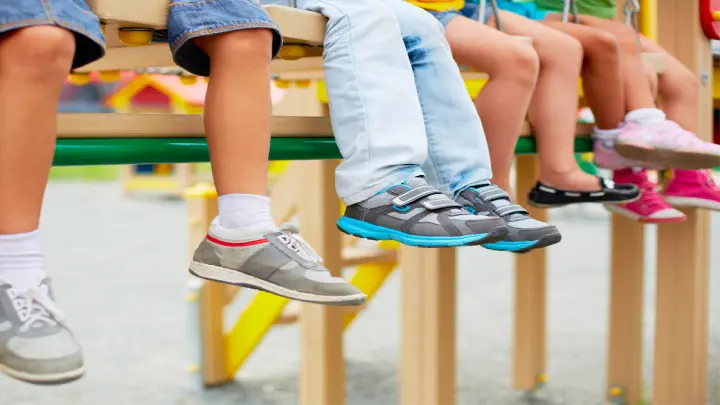If you are buying footwear for your child, here are some instructions you should follow. First, make sure the shoe fits properly. This means that it should have ample room for the child’s largest toe and the widest part of the foot. Make sure that it does not look too loose or stretched out, and that the toe box shape matches the child’s natural foot shape. Remember that if it does not fit correctly, the shoe will not be comfortable.
Children’s perception of comfort was influenced by several factors, including their age and peers. Their footwear was rated most comfortable when it felt soft and provided adequate support. As a result, children of different ages equate comfort with softness. Their perception of comfort is influenced by a variety of factors, including aesthetics, practicality, and psychological considerations. You should also choose Nike promo code to save money and time. Thus, the comfort of kids’ footwear must take these social and psychological factors into account in order to make sure that children are receiving the best footwear experience.
Table of Contents
Durability
There are several factors to consider when choosing durable kids’ footwear. A durable pair should be comfortable to wear and should be easy to clean. Moreover, it should be made from high-quality materials, so it won’t fall apart easily. The outsole should also be waterproof, which will help in keeping the kids’ feet dry during rainy days. These factors will help you make an informed decision. For more information, read the following tips to help you choose durable shoes for your child.
It’s important to choose durable kids’ footwear that is made of comfortable and shock-absorbing material. Most children do not need special arch support, but they do need durable soles. There are four parts to a shoe, including the insole and upper. The shoe should also be made of materials that are absorbent and breathable. The insole should be soft and absorbent, as kids do not tend to wear their shoes for long.
Functionality
Research on the functionalities of kids’ footwear has expanded rapidly over the last decade. In a recent review, we identified 219 studies and categorized them by age groups. This included studies on the fit and design of kids’ footwear, the effects on child development, and the role of shoes in overall health. The findings have important implications for parents and designers. However, many studies fail to consider the developmental effects of kids’ footwear.
This scoping review aimed to identify the current state of knowledge about therapeutic kids’ footwear and identify areas for future research. Based on the definition provided, we identified three main categories: functional, accommodative, and corrective. To guide further research, we also developed a standardized terminology. This terminology helps to describe the types of therapeutic footwear available. We also identified two subgroups of therapeutic children’s footwear: accommodative and corrective.
Size
While buying shoes for your child can be an overwhelming experience, it is important to keep sizing guidelines in mind. Kids need proper foot support during their critical growing years. In general, you should replace their shoes every two months for babies. You can then move on to four to six-year-olds. But be sure to check for proper sizing instructions on each brand’s website. Below are some helpful tips to ensure that your child’s footwear fits properly.
Rubber soles
Small kids’ shoes have many different components and textiles. Some are more obvious than others, but each part plays an equally important role in the construction of the shoe. This article discusses the advantages of kids’ shoes that feature natural rubber soles. This material offers great grip on varying terrains and remains soft even when the temperature is cold. This is particularly important for wintertime. Children’s shoes with natural rubber soles have many advantages overshoe with synthetic or plastic materials.
Flexibility is important for children’s shoes, as they develop their foot muscles, joints, ligaments, and arches. Flexible kids’ footwear allows children to move freely without causing any pain. The structure of the shoe also influences the flexibility of the sole. Rubber soles must be thick enough to offer support, while still flexible enough to allow unrestricted movement. The flexure of a kid’s shoe is important when a child is learning to walk.

